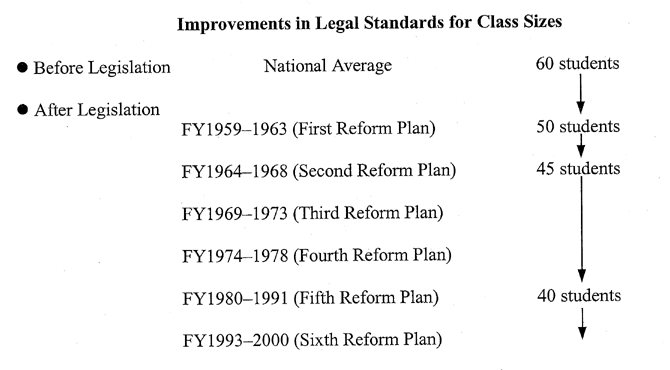| Home > Policy > White Paper, Notice, Announcement > White Paper > Japanese Government Policies in Education, Science, Sports and Culture1999 > Part2 Q18 | ||
A:The decision to do this differs among pre-fectures and municipalities,but class numbers do not necessarily drop.
Class size and teacher numbers are important factors in maintaining and raising the quality and standards of education.With regard to compulsory education at ele-mentary and lower secondary school,in order that a fixed standard be maintained in quality of education throughout the country,the Govern-ment of Japan has established in law that teacher numbers are determined in accordance with class size and class numbers.The Government also pays half of the teachers' salaries.Under this system,while municipalities es-tablish and operate elementary and lower secon-dary schools,the education conducted in mu-nicipal schools is supported by mutual coopera-tion and coordination between the central gov-ernment,prefectures and municipalities.In other words,it is a joint venture.Consequently,prefectures and municipalities may only determine class sizes in accordance with the established standards laid down by the central government.Class size is stipulated by law to be a maxi-mum of40pupils or students.In other words,if student numbers reach forty-one,the class will be split into two classes of20and21students respectively.However,in special circumstances,a class may be flexibly organized without following the above-mentioned regulation on the maximum number of students per class.For example,in the following circumstances there are cases where,with the permission of the prefecture,classes are organized differently to the40pupil maximum:
In the report of the Central Council for Edu-cation,"How Local Administration on Educa-tion Should Be,"the following points have been indicated and investigation is proceeding to-wards realizing them:

| Back to Top | MEXT HOME |